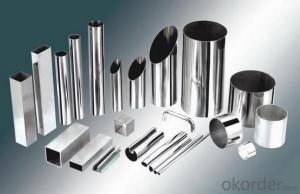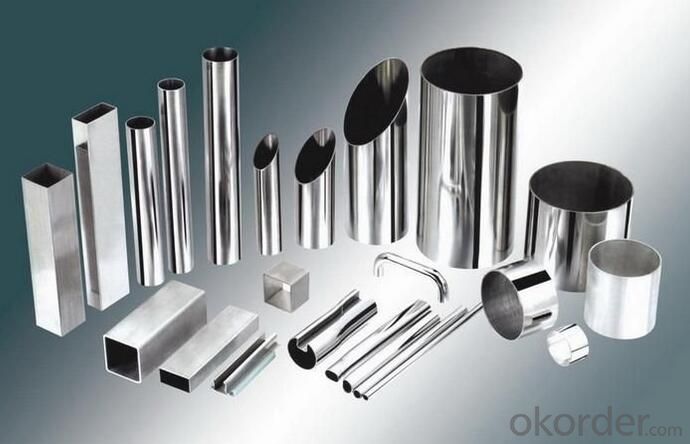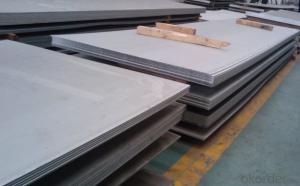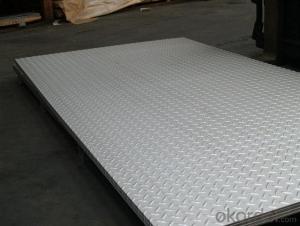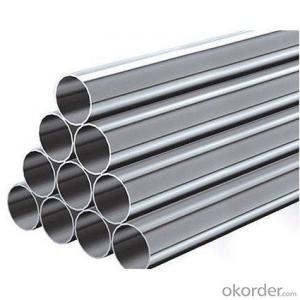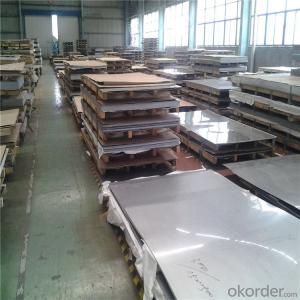304 Stainless Steel Price per kg, 304 316 Stainless Steel Sheet and Coil
- Loading Port:
- Shanghai
- Payment Terms:
- TT OR LC
- Min Order Qty:
- 1 m.t.
- Supply Capability:
- 20000 m.t./month
OKorder Service Pledge
OKorder Financial Service
You Might Also Like
Specification
304 Stainless Steel Price per kg, 304 316 Stainless Steel Sheet and Coil
Packaging Details:Wooden pallets,water proof paper-20'GP or 40'GP for stainless steel sheet.
Delivery Detail:within 5-7 days after receiving the deposit
1. Specifications about stainless steel sheet
Commodity | Professional 430 201 202 304 304l 316 316l 321 310s 309s 904l stainless steel sheet |
Grade | 201,202,304,304L,316,316L,310S,309S,321,301,310,410,420,430,904L |
Brand | TISCO ,BAOSTEEL,POSCO,JISCO,LISCO |
Certification | SGS,BV,IQI,TUV,ISO,etc |
Thickness | 0.2mm-150mm |
Width | 1000,1219,1250,1500mm, or as your requirements |
Length | 2000,2438,2500,3000,6000mm, or as your requirements |
Surface | No.1, 2B, BA, 8K Mirror, Hairline,satin, Embossed,brush,No.4,HL,matt,pvc film,laser film. |
Standard | ASTM,AISI,SUS,JIS,EN,DIN,GB, ASME,etc |
Delivery time | 5-7 days after confirming the order |
MOQ | 1 Ton |
Advantages | Showing the splendor of your quality, wearresistant as well , strong corrosion resistance and decorative effect, durable and beautiful in good taste. |
2.Production Flow about stainless steel sheet
Raw materials are sending to hot rolling units for rolling into different sizes
Hot rolled material is annealing in cold; rolled annealing furnace and pickling in acid.
All mill rolls are grinded on precision grinding machine with proper chamfering after first shiftoperation.
All sheets are pickled in different tanks and dried on brush roll machine before dispatched.
These sheets are again annealing and are sent to straighten machine for straightening.
Inspections are done at various stages. Keep proper control overall internal process via rolling,annealin and pickling by our experienced staff.
3.Surface--stainless steel sheet
| Surface Finish | Definition | Application |
| 2B | Those finished, after cold rolling, by heat treatment, pickling or other equivalent treatment and lastly by cold rolling to given appropriate luster. | Medical equipment, Food industry, Construction material, Kitchen utensils. |
BA/8K mirror | Those processed with bright heat treatment after cold rolling. | Kitchen utensils, Electric equipment, Building construction. |
| NO.3 | Those finished by polishing with No.100 to No.120 abrasives specified in JIS R6001. | Kitchen utensils, Building construction. |
| NO.4 | Those finished by polishing with No.150 to No.180 abrasives specified in JIS R6001. | Kitchen utensils, Building construction, Medical equipment. |
| Hairline | Those finished polishing so as to give continuous polishing streaks by using abrasive of suitable grain size. | Building Construction. |
| NO.1 | The surface finished by heat treatment and pickling or processes corresponding there to after hot rolling. | Chemical tank, pipe. |
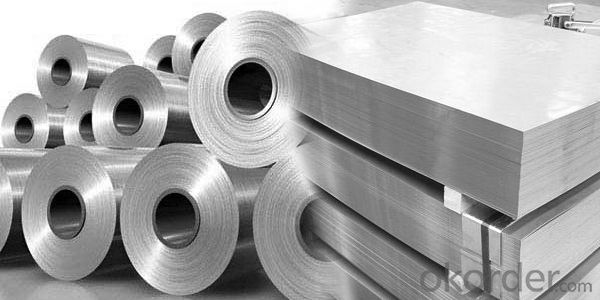
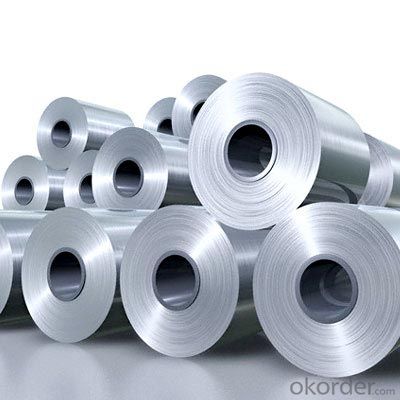
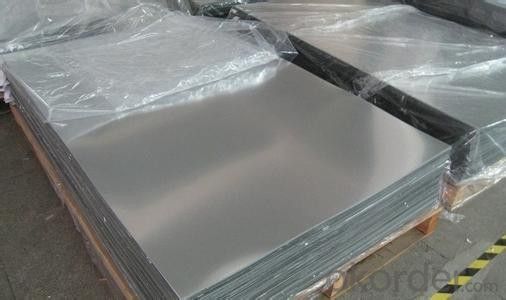
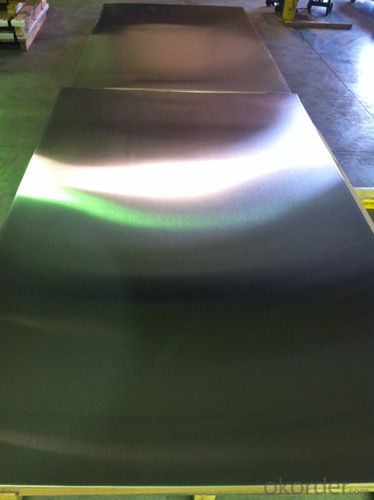

- Q: What are the different thickness tolerances for stainless steel sheets?
- The thickness tolerances for stainless steel sheets can differ based on the specific grade and type of stainless steel used. In general, the industry standard tolerances for thinner sheets range from +/- 0.005 inches to +/- 0.010 inches, while for thicker sheets, the range is from +/- 0.010 inches to +/- 0.015 inches. These tolerances ensure that the thickness of the stainless steel sheets remains suitable for various applications in the construction, automotive, and manufacturing industries. However, it is important to note that the manufacturer or supplier, as well as the intended use of the stainless steel sheets, may cause specific tolerances to vary. Therefore, it is always recommended to refer to the relevant specifications provided by the manufacturer or supplier to determine the precise tolerances for a specific stainless steel sheet.
- Q: Are stainless steel sheets magnetic?
- Yes, stainless steel sheets can be magnetic depending on the composition and treatment of the alloy.
- Q: What are the common applications for stainless steel sheets?
- Stainless steel sheets are commonly used in a variety of applications due to their durability, corrosion resistance, and aesthetic appeal. Some common applications include kitchen appliances, automotive parts, construction materials, medical equipment, and industrial machinery.
- Q: Are stainless steel sheets suitable for power plant equipment?
- Indeed, power plant equipment can be suitably constructed using stainless steel sheets. Renowned for its exceptional resistance to corrosion, robust strength, and enduring nature, stainless steel is a favored option across a multitude of industries, including power plants. Given that power plants often encounter challenging conditions characterized by elevated temperatures, intense pressure, and corrosive agents, stainless steel effectively withstands such environments. Furthermore, it exhibits commendable heat resistance, thereby ensuring the maintenance of its structural integrity even at heightened temperatures, a vital attribute for power plant equipment. Moreover, stainless steel sheets can be readily manipulated and welded to conform to specific design prerequisites for power plant equipment, thus rendering them both versatile and dependable.
- Q: Stainless steel plate how to distinguish between good and bad, there are several thick?
- Stainless steel society due to overstocking. According to the length of time due to overstocking and keeping quality, in general there are two types of:It is not a long time due to overstocking, storage and good processing unit holds not only the original quality certificate or copy, and steel or mark on the packaging and taste and clear. For the identification of this stainless steel, it is also possible to check the mark on the steel or package only on the basis of the quality certificate.Another is the backlog of longer time, storage is not perfect, neither quality certificate, steel or packaging on the mark has not obvious or fall off. For the identification of this type of stainless steel, mainly to conduct in-depth investigation and research, to the processing unit to access the original documents. In general, invoices and other original documents are marked with steel etc.. If there is no steel to access local records, then the price data, the price to ascertain no.. This is to determine several effective methods, but often the wrong person. Therefore, it is necessary to master the method of identifying objects.
- Q: Can stainless steel sheets be used for food preparation surfaces?
- Yes, stainless steel sheets can be used for food preparation surfaces. Stainless steel is a popular choice for food preparation surfaces due to its durability, resistance to corrosion, and ease of cleaning. It is non-reactive with food, making it a safe and hygienic option for food handling.
- Q: Can stainless steel sheets be used for countertops or backsplashes?
- Yes, stainless steel sheets can be used for countertops and backsplashes. Stainless steel is a durable and hygienic material that is resistant to stains, heat, and corrosion, making it a popular choice for kitchen surfaces.
- Q: Are stainless steel sheets resistant to staining from food?
- Stainless steel sheets possess a remarkable resistance to staining caused by food. Renowned for its exceptional corrosion resistance and non-reactivity with various substances, including food, stainless steel stands as a favored choice for kitchen appliances and cookware. Its capacity to endure prolonged exposure to food without staining or undergoing chemical reactions makes it highly sought-after. Moreover, stainless steel sheets are effortless to clean, making them the perfect fit for food preparation areas where cleanliness is of utmost importance. Furthermore, the sleek and impermeable surface of stainless steel sheets prevents the absorption of food particles and liquids, thus minimizing the risk of staining. In summary, stainless steel sheets offer a long-lasting and stain-resistant alternative for applications related to food.
- Q: Can stainless steel sheets be used for kitchen backsplashes?
- Indeed, kitchen backsplashes can utilize stainless steel sheets. The durability, heat and moisture resistance, and effortless upkeep of stainless steel make it a favored option for kitchen backsplashes. Not only does it lend a sleek and contemporary appearance to the kitchen, but it also shields the wall from unsightly splatters and stains. Moreover, stainless steel sheets come in a range of finishes, including brushed, mirrored, or patterned, giving homeowners the freedom to select the style that perfectly complements their kitchen design.
- Q: Can stainless steel sheets be used for storage tanks?
- Yes, stainless steel sheets can be used for storage tanks. Stainless steel is a durable and corrosion-resistant material, making it suitable for storing various substances, including liquids and gases, in industrial and commercial applications.
Send your message to us
304 Stainless Steel Price per kg, 304 316 Stainless Steel Sheet and Coil
- Loading Port:
- Shanghai
- Payment Terms:
- TT OR LC
- Min Order Qty:
- 1 m.t.
- Supply Capability:
- 20000 m.t./month
OKorder Service Pledge
OKorder Financial Service
Similar products
Hot products
Hot Searches
Related keywords
